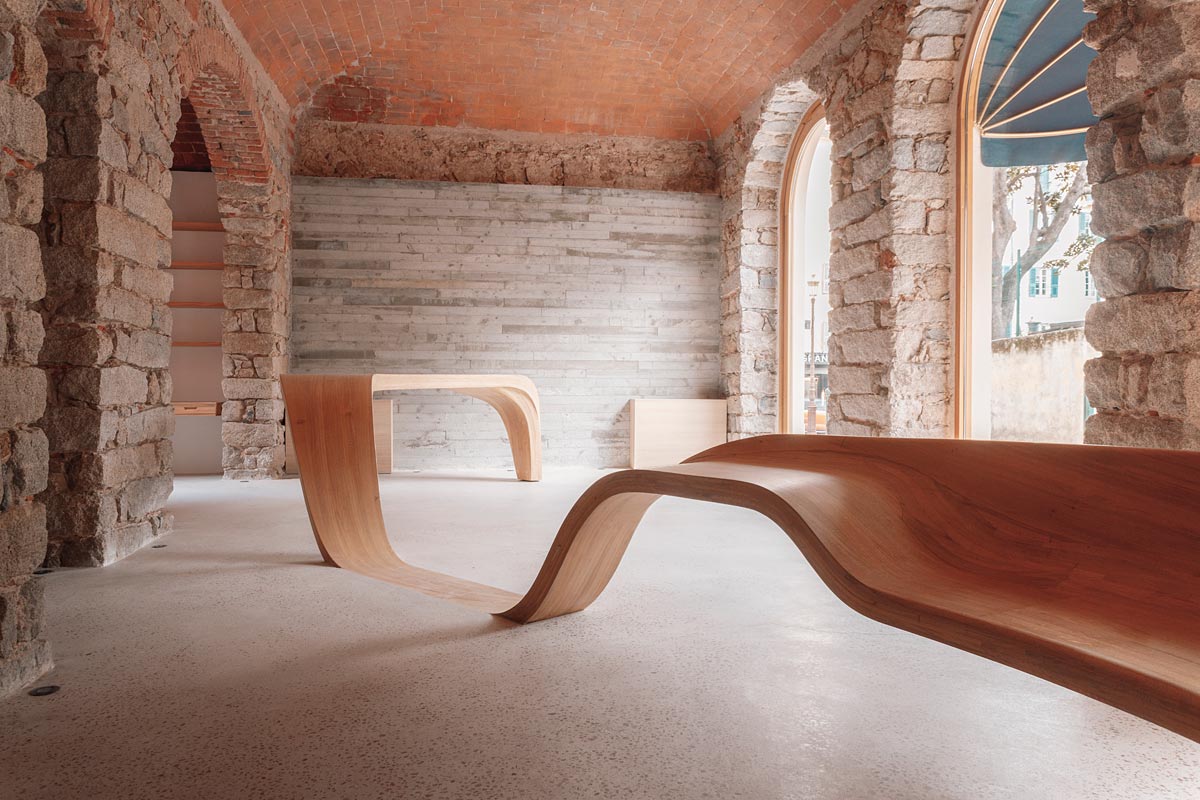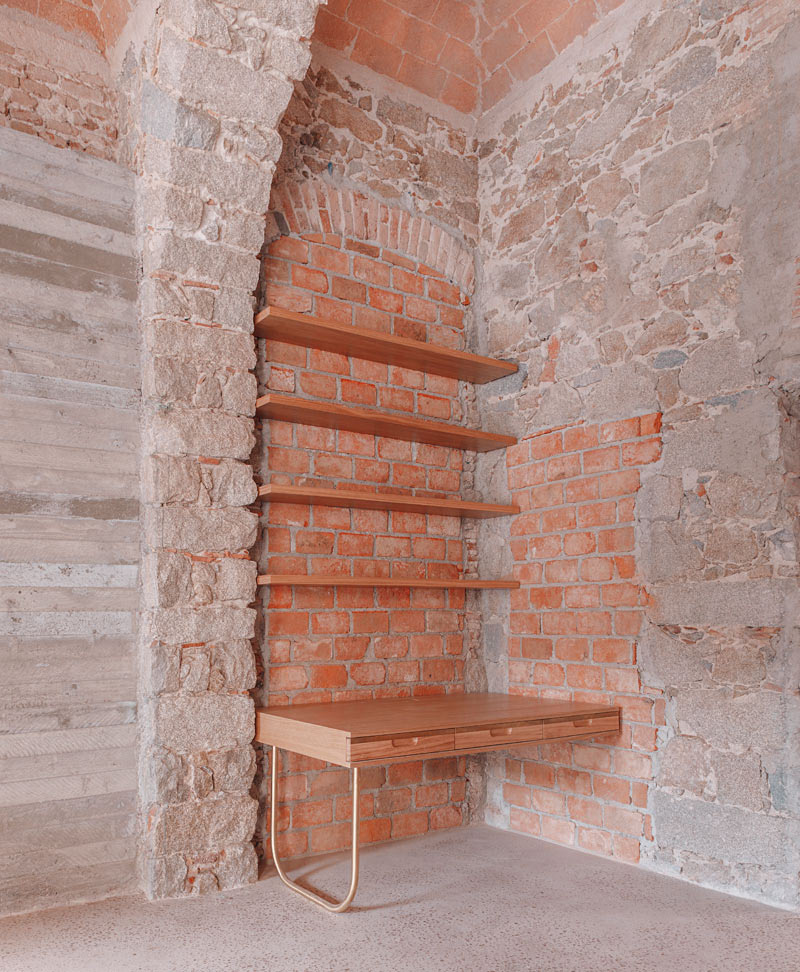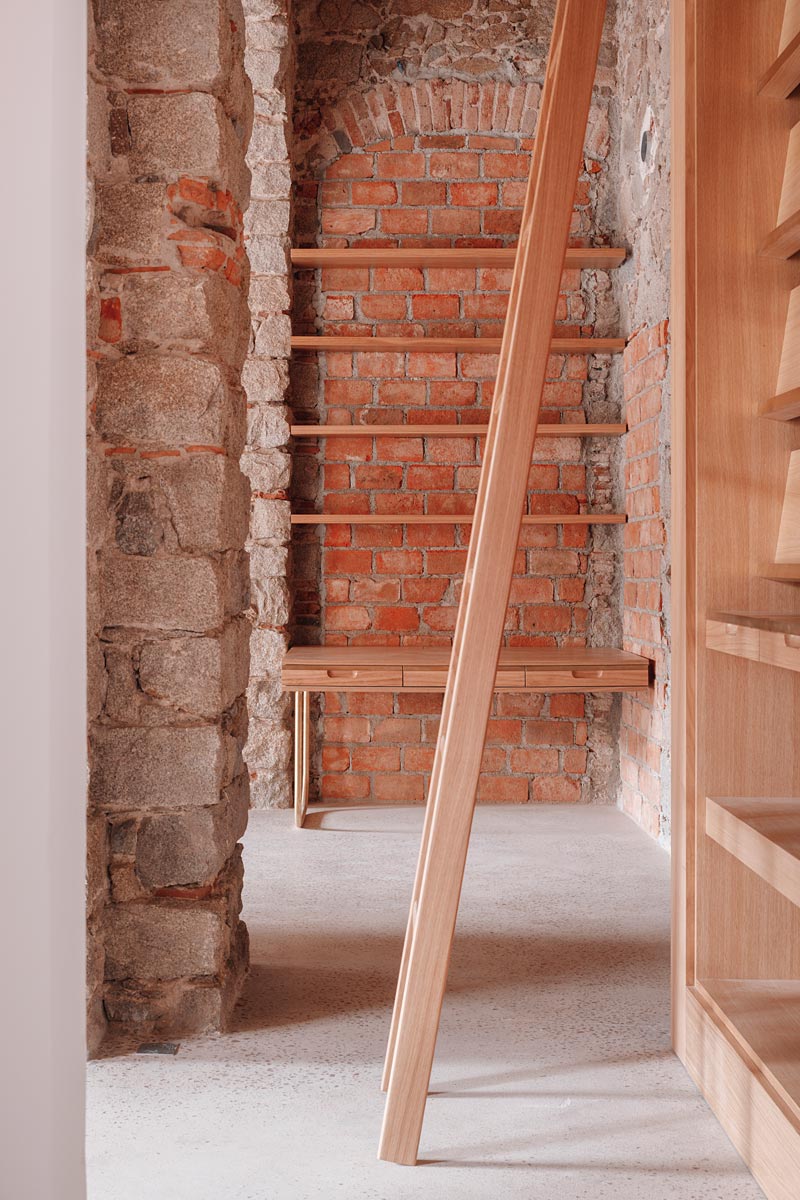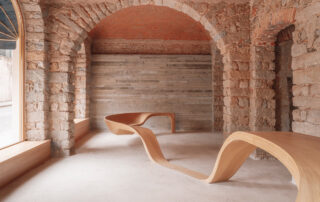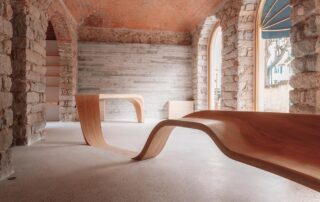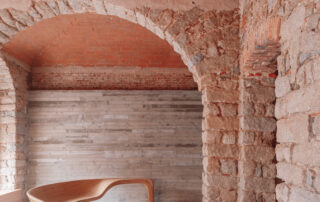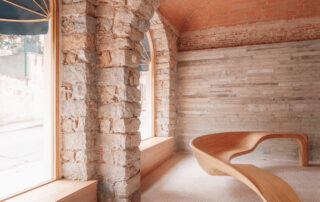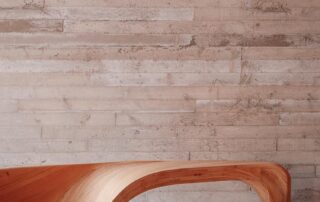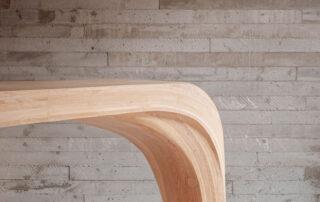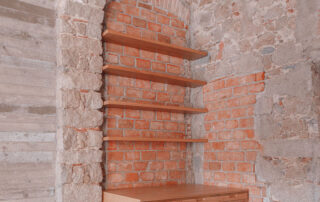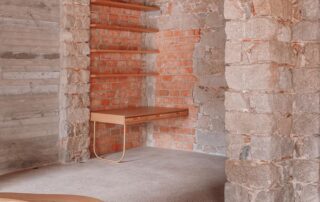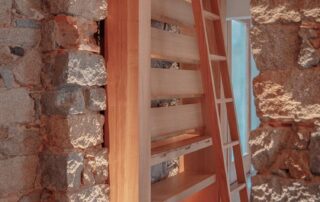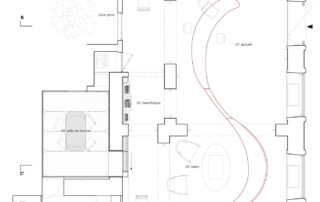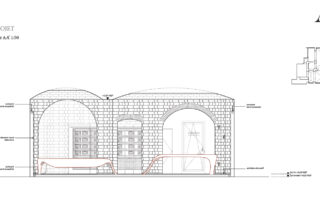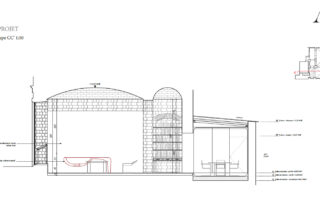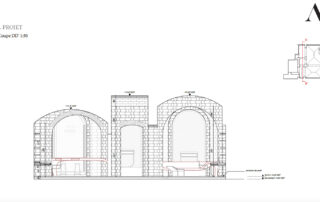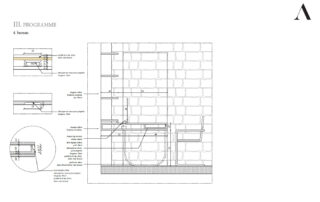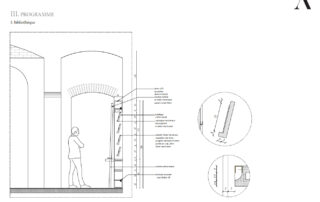Amelia Tavella: The Union of Art and Architecture
Amelia Tavella’s architecture is sensual. The material is skin, the light is captured and shaped, passing through the openings: bays, windows, moucharabiehs. Suddenly, we possess the supernatural power to capture the light so dear to the Corsican architect, whose gaze is inspired, saturated.
The lines of her buildings embrace the forms that surround them; they are those of ridges, valleys, scrubland and the maritime world.
Every time, it’s a question of movement, of torsion. The aim is not to bend nature, but to adapt to it, to respect it.
The construction moves, undulates, arches. It is a witness to and mirror of the great landscape it greets. An infinite desire for poetry and beauty. From this desire was born a piece of furniture for a deeply restored private setting in his native Corsica.

Photo: Thibaut Dini.
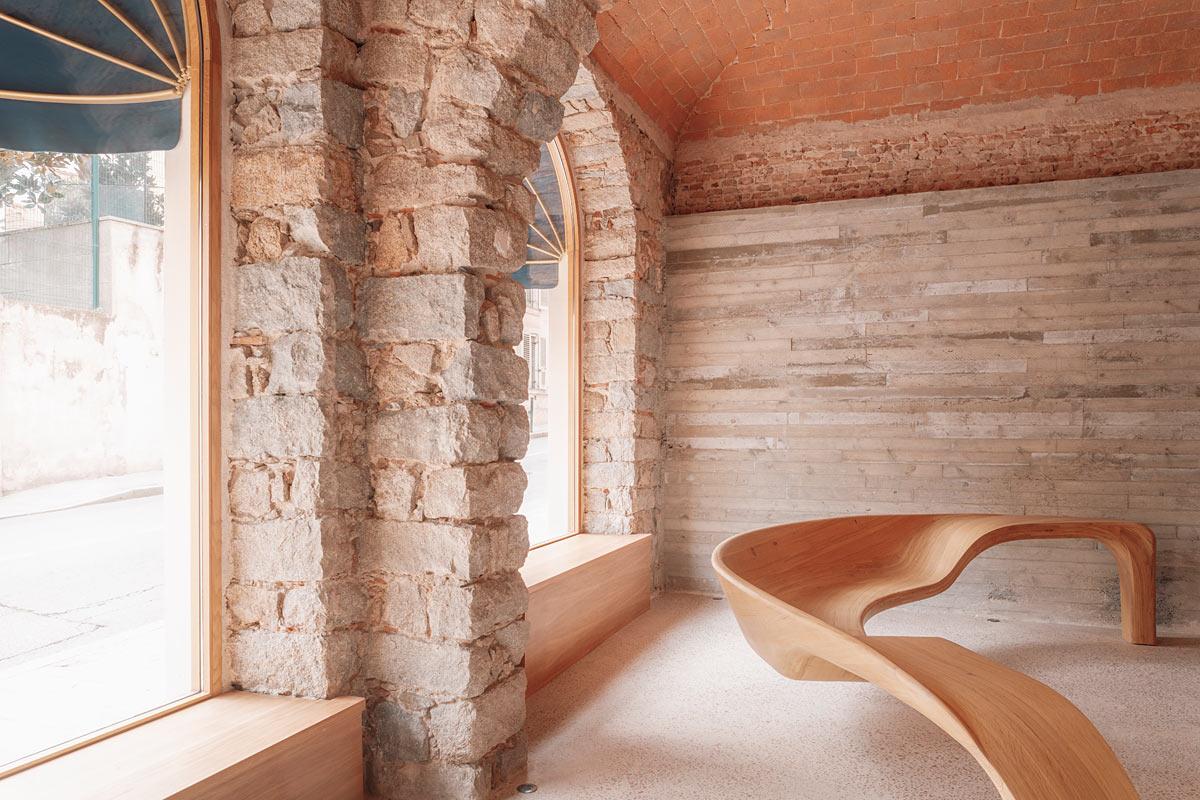
This solid oak panel occupies the space, winding its way through it with its dual functions. A seat and a support, the object balances between air and earth. It is simple and spectacular in its construction, with no trace of links, joints or accidents. It seems to stand, to exist in a single line. It hangs with no attachments other than the floor and ceiling above it. It is furniture and sculpture, solid and organic, feminine and masculine, animal and living. It’s captured the space without cluttering it up, like the buildings of the architect-archaeologist who invents without undoing. Here, once again, is the expression of learned delicacy. The object is the child of buildings, schools and convents. It has the texture, the profile that responds to the geography.
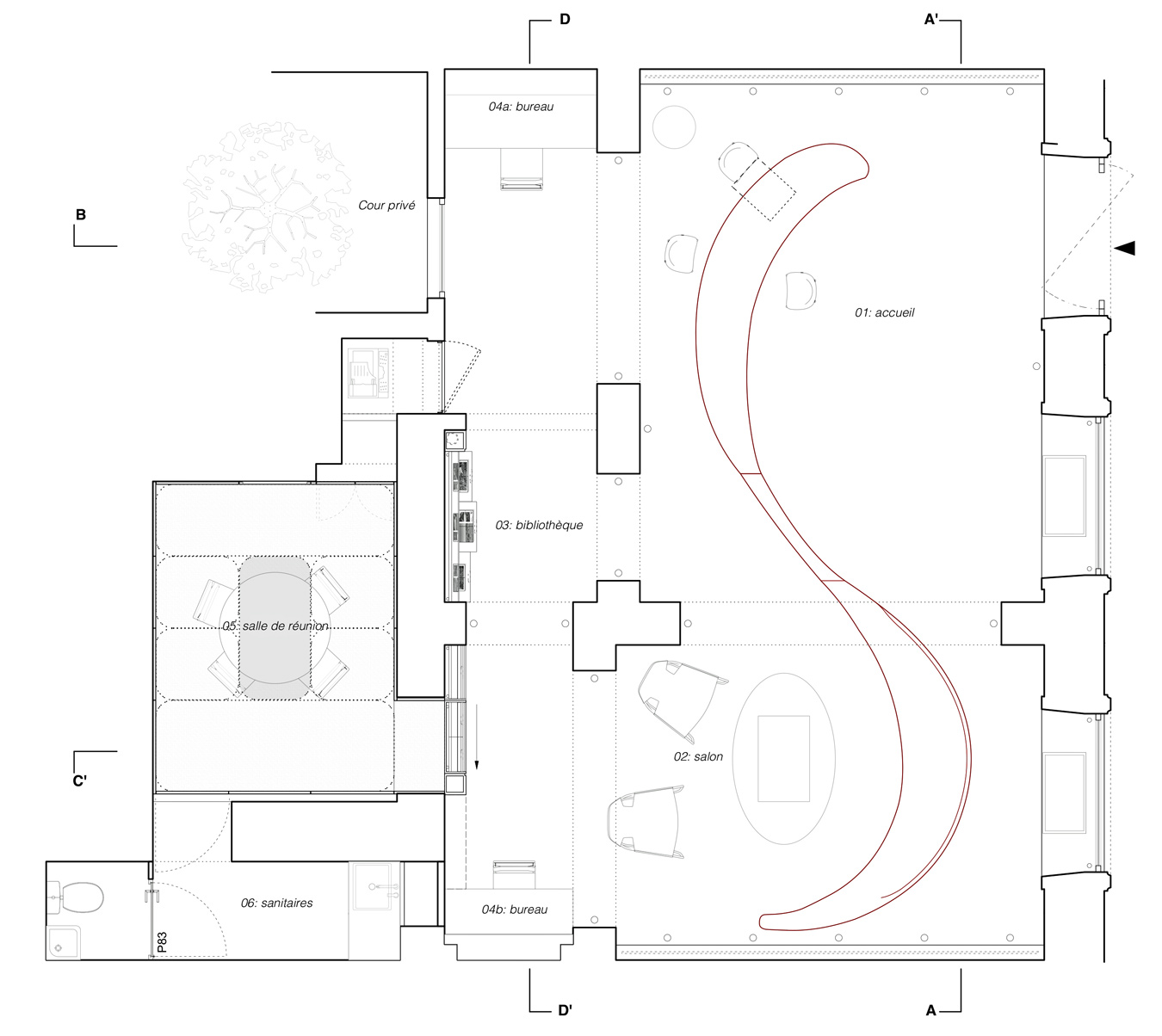
Plant.
Here, it unfolds in an enclosed space whose walls reproduce the stone and, on a smaller scale, wood that Amelia Tavella has also worked on for an office or library. From the largest to the most intimate, the gesture of love is not betrayed. It unfolds its aesthetics, its philosophy, its just wish. The furniture embraces the person who will use it. It is a tool and an art, and this is surely what architecture is all about. Amelia Tavella sets out on a new path. The vision of her furniture is equal to that of her work.
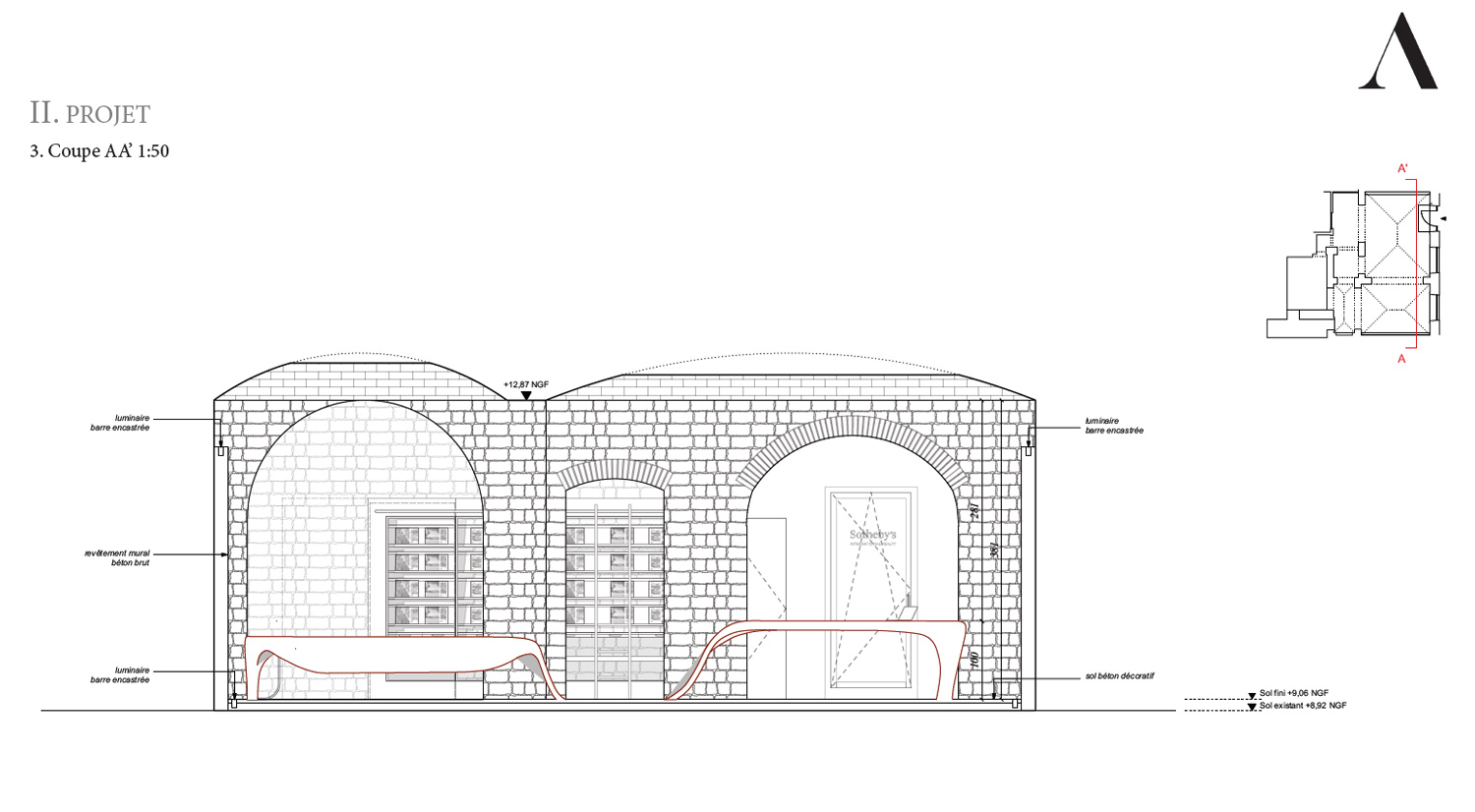
Elevation / Section A-A’.
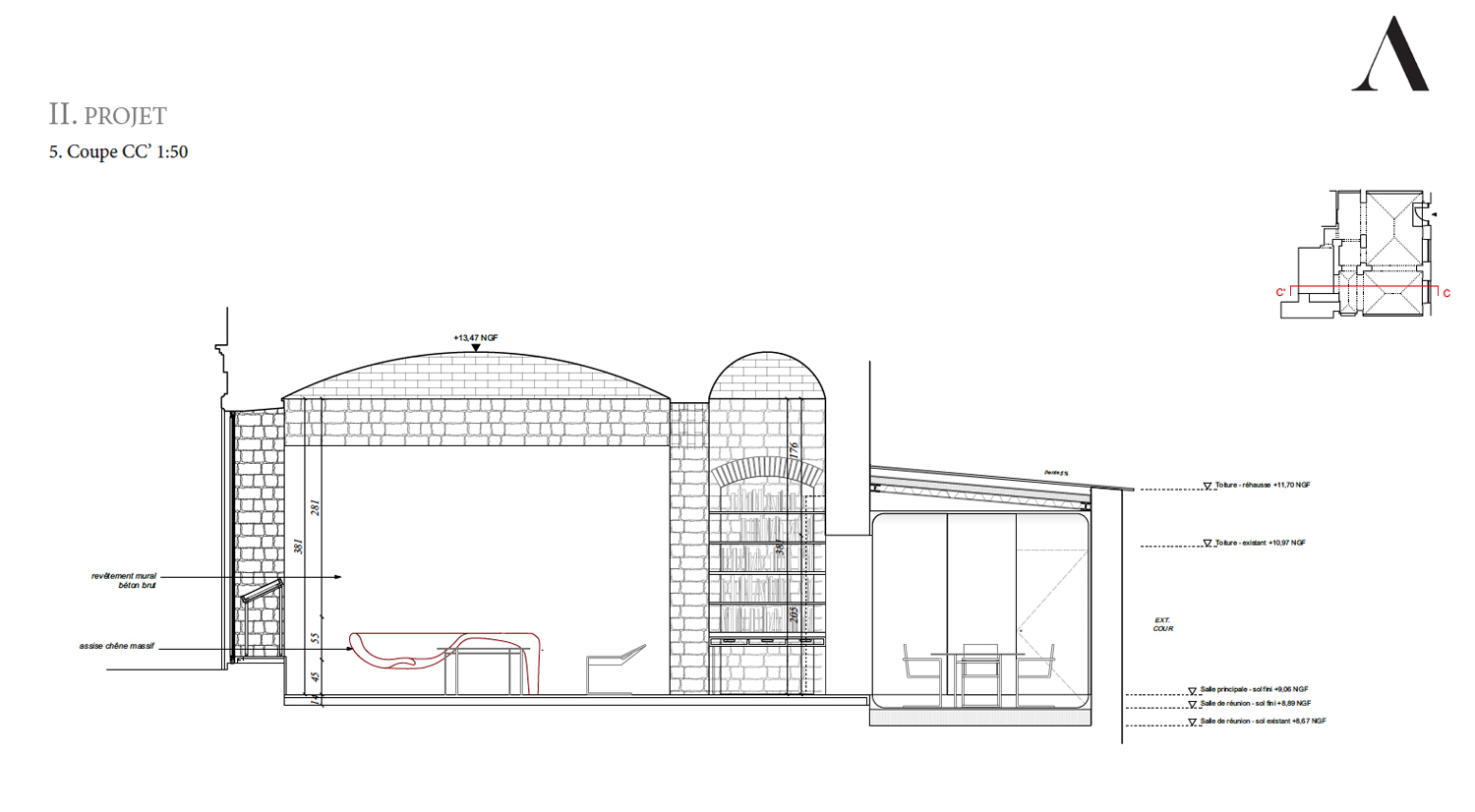

“I designed a piece of furniture, curvilinear, an almost living animal. Its curves are feminine, its skin is oak, veined, one-sided. The object is a marker of space, crossing it from side to side. Like a sinuous arm, this work-counter links the interior to the exterior. It’s functional, both desk and seat. It’s my first piece of furniture and the starting point for a creation that’s different from my buildings, but which reproduces the gesture of blending in with what is.
It is the first piece of furniture designed and the starting point for a creation that is different from that of my buildings, but which reproduces the gesture of blending in with what is, while retaining a desire for aestheticism and fusion with the site.
I conceived and built a unique and natural central work, without constraint, a work within the existing work, a space within the space, a link between host and guest. Crossing its threshold is a step towards a dream. The imprint of Corsica beats here, in the silence and grandeur of its nature.
I worked in this imaginary world, delivering a topographical, geographical map, in the lair of a place of reference, the megaphone of a sinuous, bewitching island”.
Text by Nina Bouraoui
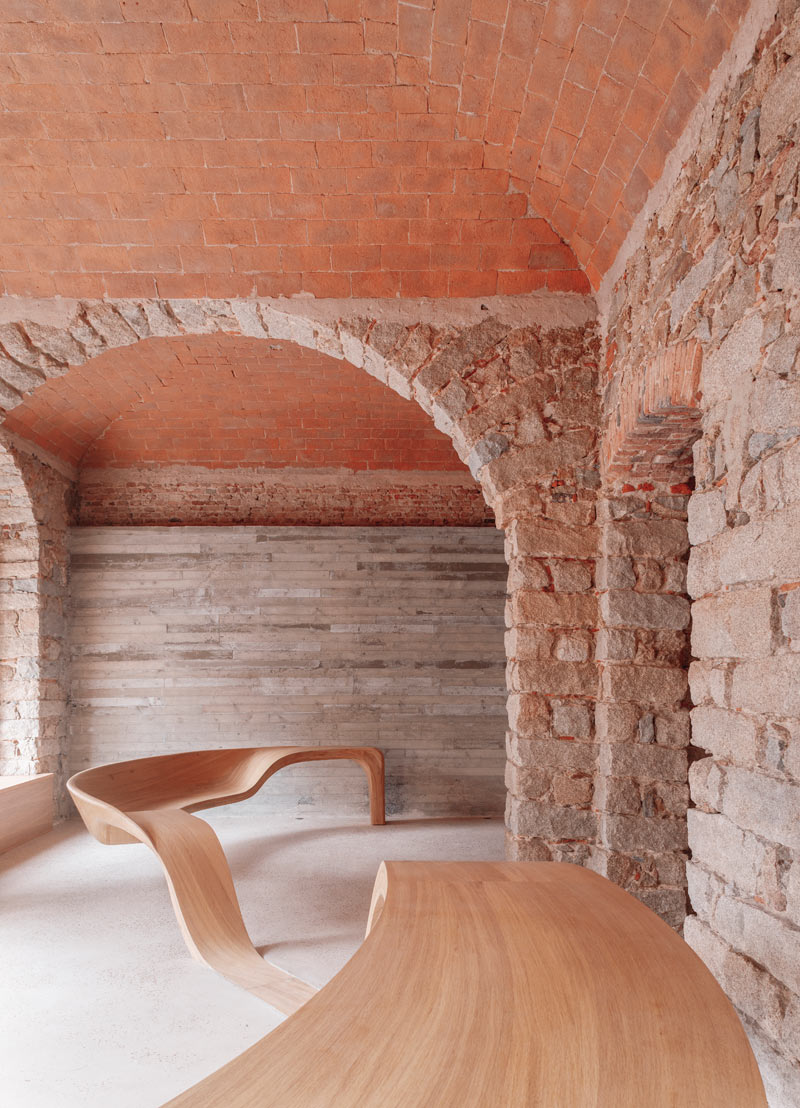
Photo: Thibaut Dini.

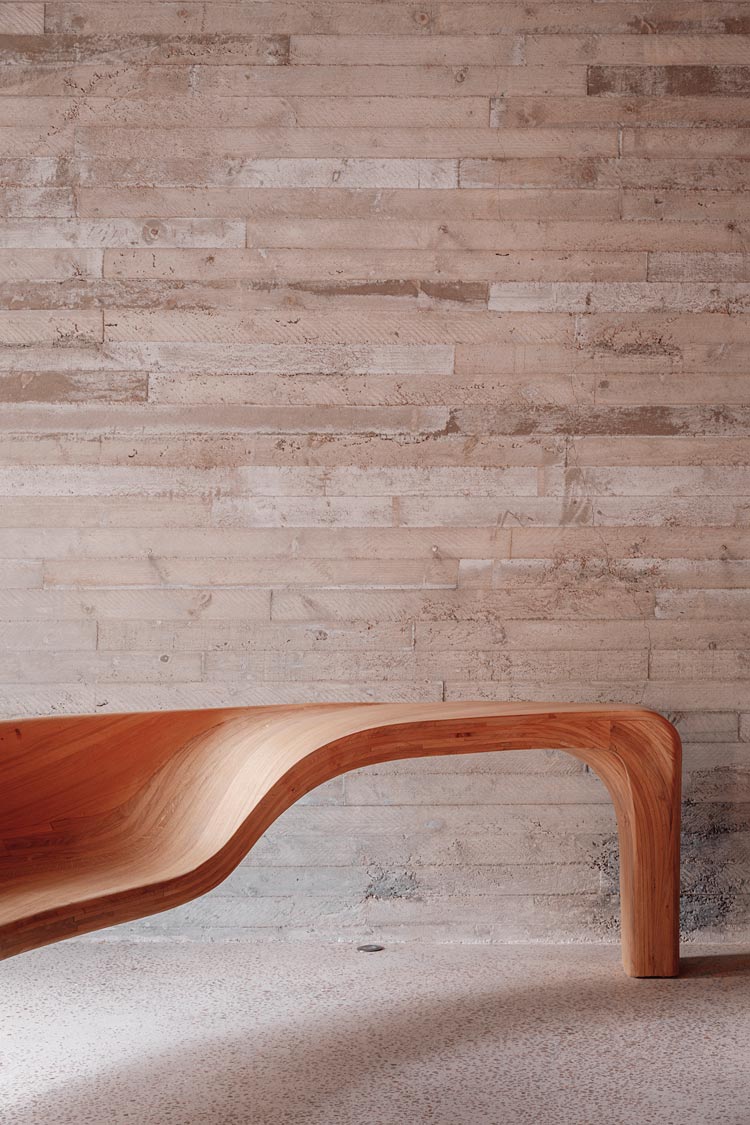
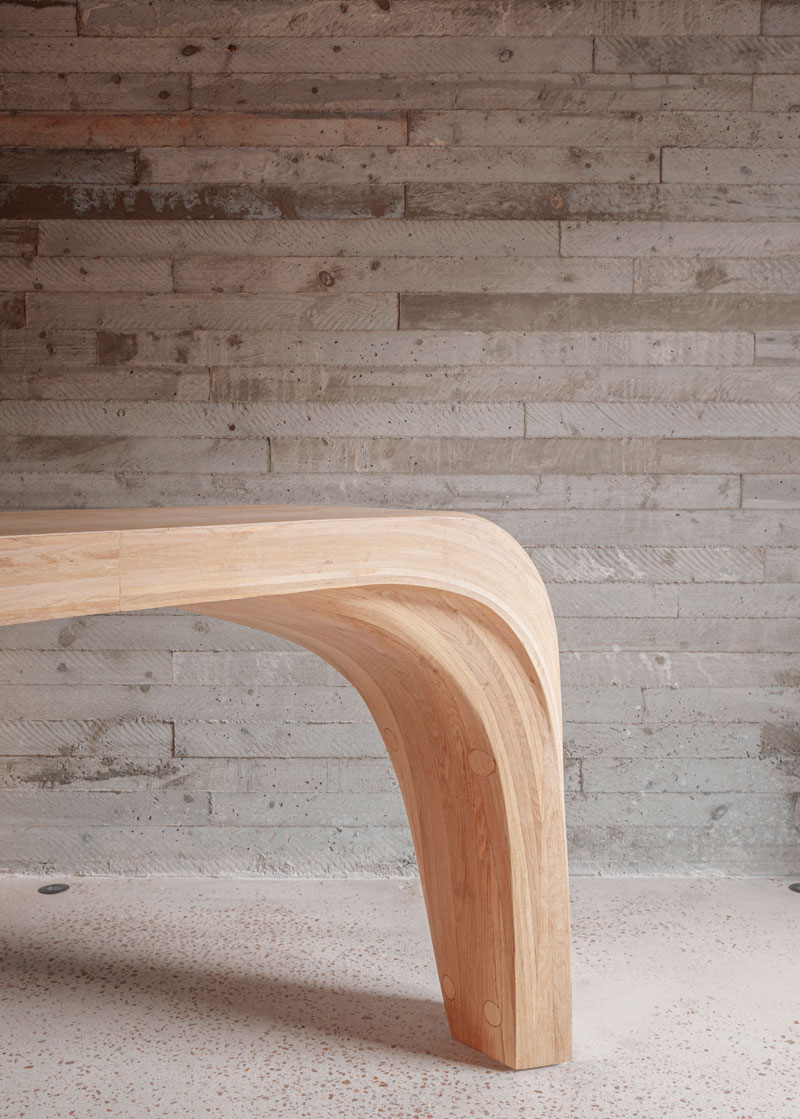
Amelia Tavella: l’unione tra arte e architettura
L’architettura di Amelia Tavella è sensuale. Il materiale è pelle, la luce è catturata e plasmata, attraversando le aperture: bay window, finestre, moucharabiehs (grate di legno). Improvvisamente, possediamo il potere soprannaturale di catturare la luce così cara all’architetta corsa, il cui sguardo è ispirato, saturo.
Le linee dei suoi edifici abbracciano le forme che li circondano; sono quelle delle creste, delle valli, della macchia mediterranea e del mondo marino.
Ogni volta si tratta di movimento, di torsione. L’obiettivo non è piegare la natura, ma adattarsi ad essa, rispettarla.
La costruzione si muove, ondula, si arca. È testimone e specchio del grande paesaggio che accoglie. Un desiderio infinito di poesia e bellezza. Da questo desiderio è nato un pezzo di arredamento per un ambiente privato profondamente restaurato nella sua Corsica nativa.

Photo: Thibaut Dini.

Questo pannello di quercia massiccia occupa lo spazio, serpeggia attraverso di esso con le sue due funzioni. Un sedile e un supporto, l’oggetto si bilancia tra aria e terra. È semplice e spettacolare nella sua costruzione, senza tracce di collegamenti, giunture o incidenti. Sembra stare in piedi, esistere in una sola linea. Sospeso senza attacchi diversi dal pavimento e dal soffitto sopra di esso. È mobile e scultura, solido ed organico, femminile e maschile, animale e vivente. Ha catturato lo spazio senza appesantirlo, come gli edifici dell’architetta-archeologa che inventa senza distruggere. Qui, ancora una volta, si esprime una delicata maestria. L’oggetto è il figlio di edifici, scuole e conventi. Ha la trama, il profilo che corrisponde alla geografia.
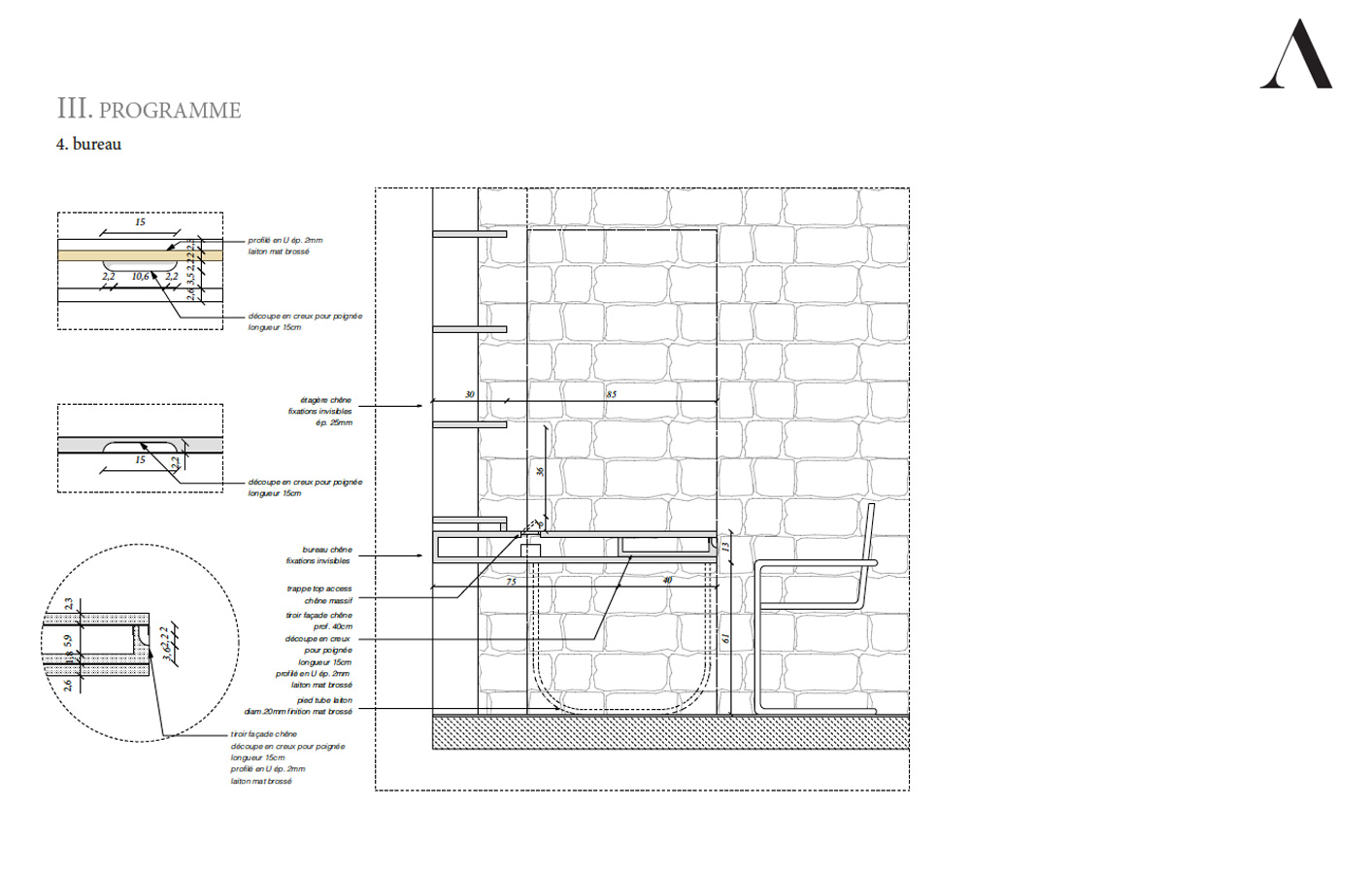
Bureau section.
Qui, si dispiega in uno spazio chiuso le cui pareti riproducono la pietra e, su scala ridotta, il legno che Amelia Tavella ha lavorato anche per un ufficio e una biblioteca. Dal più grande al più intimo, il gesto d’amore non è tradito. Svela la sua estetica, la sua filosofia, il suo desiderio giusto. L’arredamento abbraccia la persona che lo utilizzerà. È uno strumento e un’arte, ed è sicuramente di questo che si tratta nell’architettura. Amelia Tavella si imbarca in una nuova strada. La visione del suo arredamento è pari a quella del suo lavoro.
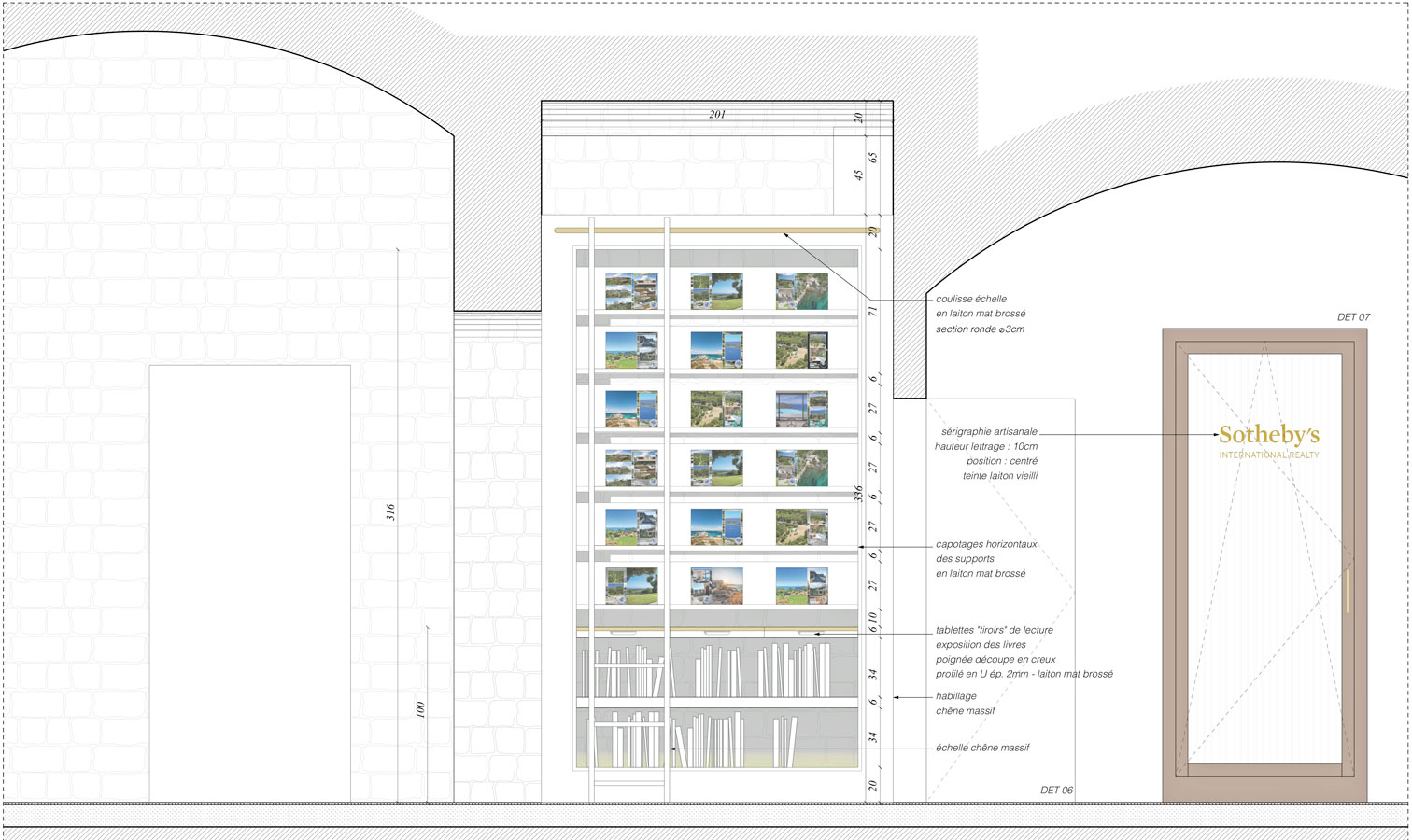
Bibliothèque.

“Ho progettato un pezzo di arredamento, curvilineo, quasi un animale vivente. Le sue curve sono femminili, la sua pelle è quercia, venata, unilaterale. L’oggetto è un segno dello spazio, lo attraversa da parte a parte. Come un braccio sinuoso, questo piano di lavoro collega l’interno all’esterno. È funzionale, sia scrivania che sedile. È il mio primo pezzo di arredamento e il punto di partenza per una creazione diversa dai miei edifici, ma che riproduce il gesto di fondersi con ciò che è”.
È il primo pezzo di arredamento progettato e il punto di partenza per una creazione diversa da quella dei miei edifici, ma che riproduce il gesto di fondersi con ciò che è, conservando il desiderio di estetica e fusione con il luogo.
Ho concepito e costruito un lavoro centrale unico e naturale, senza costrizioni, un lavoro all’interno del lavoro esistente, uno spazio all’interno dello spazio, un legame tra ospite e padrone di casa. Attraversare la sua soglia è un passo verso un sogno. L’impronta della Corsica batte qui, nel silenzio e nella grandezza della sua natura.
Ho lavorato in questo mondo immaginario, consegnando una mappa topografica, geografica, nella tana di un luogo di riferimento, il megafono di un’isola sinuosa e affascinante”.
(traduzione: weArch)
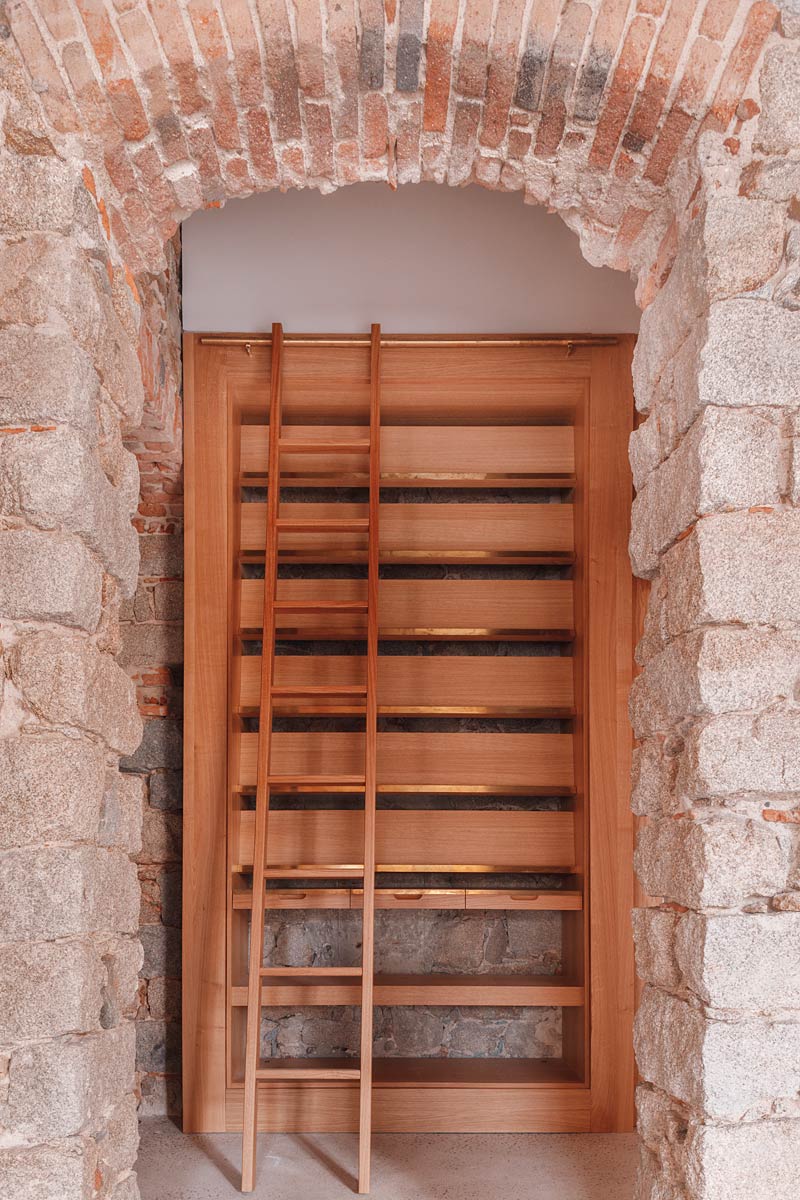
Photo: Thibaut Dini.


